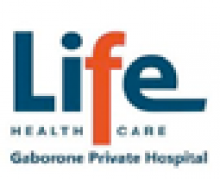CPR (cardiopulmonary resuscitation) saves lives. Someone's life may depend on you reading this section.
You and CPR (cardiopulmonary resuscitation) can save a life: here's how.
Summary
- CPR is an emergency procedure performed if someone has stopped breathing or whose heart has stopped.
- The firstaider continues to give CPR until the patient starts breathing unaided or professional help can take over.
- CPR involves giving a repeated cycle of 30 chest compressions followed by two breaths.
- It is better to give CPR imperfectly than not at all.
- If the brain is starved of oxygen for more than four minutes, as may occur in a near-drowning or heart attack, permanent brain damage can result. Thus immediate action is required: every second counts.
- The role of the lay rescuer/first-aider (i.e. anyone who is not a certified medic or paramedic) is to continue to give CPR until the patient starts to breathe unaided or professional help arrives to take over.
- Even if you are not an experienced first aider, rather err on the side of giving CPR imperfectly than not giving it at all - it is always better to try than not.
Action plan
In an emergency situation it is difficult to remember what to do and so we learn the simple routine of H H H ABC:
- H: Hazards
- H: Hello
- H: Help
- A: Airway
- B: Breathing
- C: Circulation
Follow these steps:
H is for Hazards
Ask yourself: Are there any life-threatening hazards or dangers to you or the patient? If so, you need to manage them, or move yourself and the patient out of harm's way.
There is significant risk of infection with mouth-to-mouth contact and so unless the victim is a family member it is best to use a pocket mask during resuscitation. (This simple mask, which covers the patient's mouth and nose, prevents any contact with body fluids).
If a pocket mask is not available it is acceptable to do compression-only CPR if there are no signs of circulation.
H is for Hello
Is the patient awake or unconscious? Ask loudly: Are you OK? If there is no response, tap the shoulder. In the case of a baby, tap the feet.
If there is no response it means the patient is not getting enough blood and oxygen to the brain and needs help.
H is for Help
Call for others around you to come and help - there may be a doctor or paramedic within shouting distance!
Phone for emergency medical help on one of the following numbers:
- 112 on a cellular phone
- 10177 National medical emergency number for ambulance services
- 082 911 Netcare
- 084 124 ER24
Tell the operator that you have an unconscious patient and state exactly where you are. They will ask for a call-back number if you have one. If you need advice on how to do CPR they can assist you over the phone.
A is for AIRWAY
Open the airway.
The patient will normally be lying on his or her back. Place two fingers on the forehead and two fingers under the bony part of the chin and gently tilt the head backwards - the so-called "head- tilt chin-lift" method of opening the airway.
B is for BREATHING
Listen, look and feel for breathing. Kneel next to the patient with your head close to his or her head. Look to see if the chest/abdomen rises and falls. Listen for any sound of breathing. Feel for any air moving in or out the mouth or nose: hold your cheek near the patient's nose and mouth to feel for exhaled air. Do this for up to 10 seconds.
If there is breathing (about 12 breaths or more per minute), place the person in the recovery position.
If there is no breathing (or if you are unsure), log-roll the patient i.e. roll their body as a unit (the vertebral column must be kept in a straight line from head to buttocks) onto his or her back.
If the patient is not breathing you need to breathe for them:
Again, ensure the airway is open by tilting the head back - keep one hand on the victim's forehead and two fingers of the other hand under the chin to lift the jaw. Place the pocket mask over the patient's mouth and nose.
Blow gently and slowly while you watch to see if the chest rises.
Each breath should take 2 seconds (one in one out). Between breaths, lift your head and see if the chest moves. If the chest rises and falls, it is effective breathing. If it does not, adjust the head and try again. Make up to 5 attempts if necessary. (Airway obstruction is normally related to the tongue and is very seldom due to foreign body obstruction. However, if there is no chest movement at this stage, check for a foreign body, and, if there is a blockage, switch to obstructed airway manoeuvres.)
C is for CIRCULATION
In addition to breathing for the patient, you need to perform chest compressions to keep blood circulating to the tissues.
It is difficult for the lay rescuer to effectively determine whether the patient has a pulse or not. Therefore, the appropriate action is to start immediately with chest compressions once you have given 2 effective breaths.









